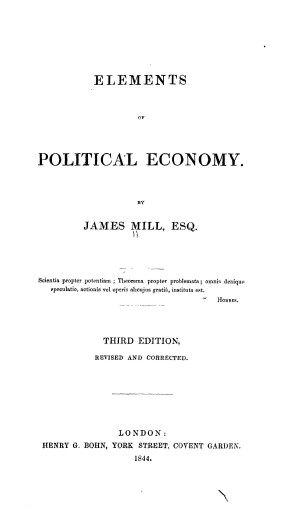
Elements of Political Economy (3rd ed. 1844)
- James Mill (author)
James Mill’s work offers excellent summaries of diminishing marginal returns in Chapter II, of comparative advantage in Chapter III, Section V, of the quantity theory of money and the market for foreign exchange in Chapter II, and of the aggregate budget constraint in Chapter IV. Mill’s exposition of the labor theory of value is so compelling and simple that it still represents a logic so apparently correct that students and laymen alike easily lapse into it.